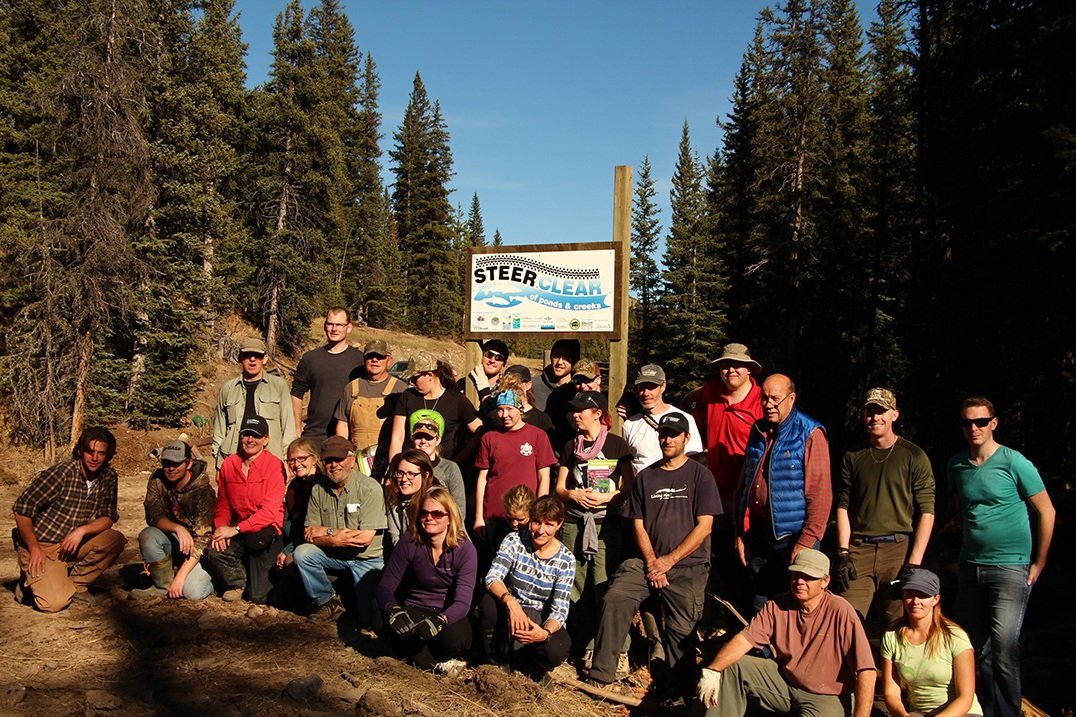by Watershed Stewardship Assistant, Maria Albuquerque
As my last day at OWC, there is one word to describe how I will feel soon: SAUDADE. It's a Portuguese word that means a mix of nostalgia and longing. It is feeling grateful for what someone has lived/experienced. Working for OWC has been one of the greatest highlights of my time in Lethbridge, for everything I learned and shared in the Oldman watershed. I will for sure feel saudade.
Shannon Hart and Maria Albuquerque. Nature Conservancy of Canada Take Me to the River Weed Pull.
OWC helped me see our watershed through a different lens. Going back to 2023, when I moved from Yellowknife to Lethbridge, I noticed that as I drove further south, there were fewer trees and lakes. I thought “well, this looks a little boring,” although I admit I was biased because I grew up in the tropics! However, when I drove down the coulees, I was amazed by the landscape and the cottonwood forest along the Oldman River. It was such a relief to discover that beautiful oasis! It wasn't until I started working for the OWC that I truly understood and embraced the rich biodiversity of our entire watershed. Although the grasslands may initially appear monochromatic, if you pay close attention, you'll notice an incredible variety of flora. I learned about the native flowers that bring different tones and shades from the mountains to the prairies throughout the seasons, from spring to fall.
I discovered resilient, drought-tolerant plants like tall fescue grass and what they can teach us about thriving in extreme conditions. I also had the opportunity to explore the diverse wildlife in our watershed. I got to "be a beaver” while building Beaver Dam Analogues, I got to sample countless benthic bugs while assessing stream health, and make up games to talk about Alberta native bees!
Sampling benthic macroinvertebrates for CABIN. Photo by Sofie Forsström.
Sharing our new native bee / pollinator activities at Spring Nature Fest.
OWC allowed me to explore the bio-cultural diversity of our watershed. This land, stewarded by the Siksika, Piikani, and Kainai Nations for millennia, is also home to people from various backgrounds and interests. Over nearly two years, I engaged in conversations with thousands of individuals about stewardship in our watershed, including food producers, outdoor recreationists, both formal and informal educators and learners, and folks from all walks of life. Through writing more than ten blog posts, I gained insights into our watershed’s hydrology, natural infrastructure, major water users, land use, extreme weather events, and much more!
Planting native plants at Naapi's Garden in during KEPA Summit 2024. Photo by Maria Albuquerque.
Presenting about Natural Infrastructure at Nature Conservancy Canada’s Eat and Greet event. Photo by Sofie Forsström.
Throughout my time working with the OWC team, members, partners, and volunteers, I learned valuable lessons from everyone, whether through implementing educational programs or discovering innovative ways to plant willows. I am truly grateful for the amazing experiences I had in the Oldman watershed thanks to OWC!
I would also like to extend my thanks to the talented bakers who kept us energized during our fieldwork days.
If I can give a last tip for guests and residents on this land, it is to take care of the Oldman watershed—it will take care of you!
Oldman, já estou com saudades!
Last day at OWC with this amazing team 💙 . Photo by Kallie Val-Zehan Desruisseaux.










